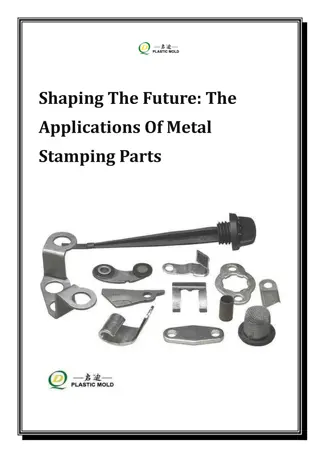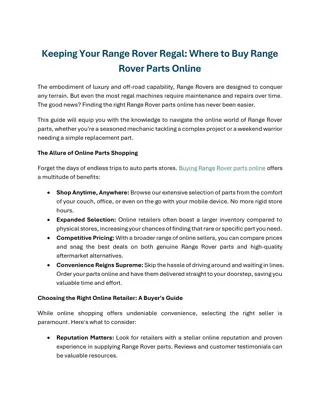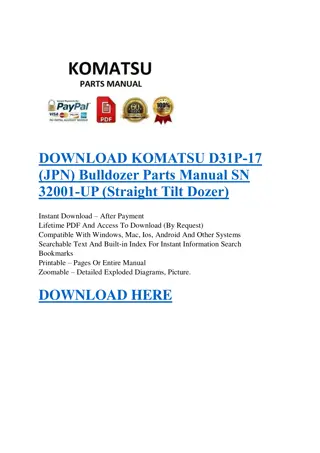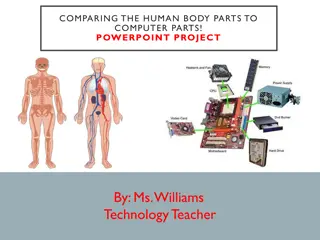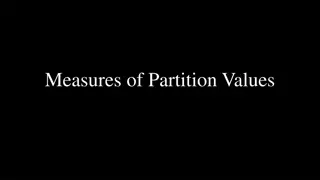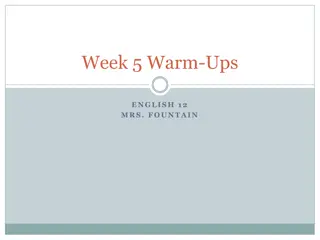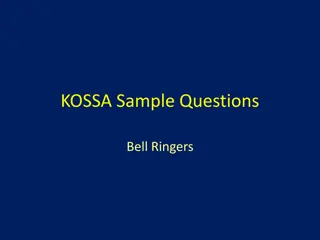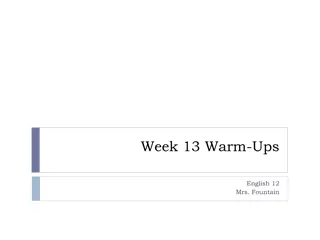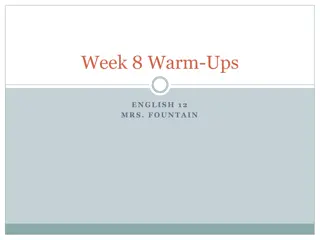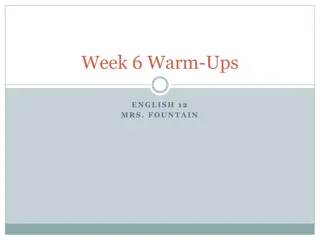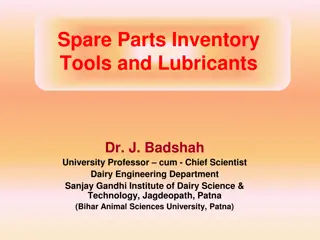
File Management and Operations
Explore the essential concepts of file management, including file properties, operations, opening files, access methods, sequential file processing, and more. Learn about different file types, access rights, and how files are managed within a typical file system.
Download Presentation

Please find below an Image/Link to download the presentation.
The content on the website is provided AS IS for your information and personal use only. It may not be sold, licensed, or shared on other websites without obtaining consent from the author. If you encounter any issues during the download, it is possible that the publisher has removed the file from their server.
You are allowed to download the files provided on this website for personal or commercial use, subject to the condition that they are used lawfully. All files are the property of their respective owners.
The content on the website is provided AS IS for your information and personal use only. It may not be sold, licensed, or shared on other websites without obtaining consent from the author.
E N D
Presentation Transcript
FILES Pr1 2
File properties Name only information kept in human- readable form Identifier unique tag (number) identifies file within file system Type needed for systems that support different types Location pointer to file location on device Size current file size Protection controls who can do reading, writing, executing Time, date, and user identification data for protection, security, and usage monitoring Information about files are kept in the directory structure, which is maintained on the disk
Operations with files File is an abstract data type Create Write Read Reposition within file Delete Truncate Open(Fi) search the directory structure on disk for entry Fi, and move the content of entry to memory Close (Fi) move the content of entry Fi in memory to directory structure on disk
Opening the file Several pieces of data are needed to manage open files: File pointer: pointer to last read/write location, per process that has the file open File-open count: counter of number of times a file is open to allow removal of data from open-file table when last processes closes it Disk location of the file: cache of data access information Access rights: per-process access mode information
File Access methods Sequential Access read next write next reset no read after last write (rewrite) Direct Access read n write n position to n read next write next rewrite n n = relative block number
Library related operations Search for a file Create a file Delete a file List a directory Rename a file
Library organization to simplify management Efficiency locating a file quickly Naming convenient to users Two users can have same name for different files The same file can have several different names Grouping logical grouping of files by properties, (e.g., all Java programs, all games, )
Access lists and grouping Mode of access: read, write, execute Three classes of users RWX a) owner access RWX b) group access RWX c) public access (unique name), say G, and add some users to the group. For a particular file (say game) or subdirectory, define an appropriate access. 7 1 1 1 1 1 0 6 1 0 0 Ask manager to create a group 4 owner group public chmod 764 game Attach a group to a file chgrp G game
Protection File owner/creator should be able to control: what can be done by whom Types of access Read Write Execute Append Delete List
Opening the file Pointers can also be used to read and write from a file #include <stdio.h> #include <stdlib.h> int main (void) {FILE *loe= fopen( esimene.txt , r ); fprintf(loe, The first sample ); fclose(loe); // belongs to every decent file job } /*via variable loe file can be opened esimene.txt for reading r, the text is read and the file is closed */ Programmeerimine I,II 16
Reading from a file #include <stdio.h> #include <stdlib.h> int main(void) { char rida[128]; FILE *sisse=fopen("tervitus.txt", "r"); // r - for reading while(!feof(sisse)) { // fscanf(sisse, "%s", rida); //v tab he s na fgets(rida, 128, sisse); printf("%s", rida); } fclose(sisse); return 1; } fsacnf and fgets can both be used, but not simultaneously Programmeerimine I, II 17
Writing a file As an example we had: FILE *kirjuta= fopen( esimene.txt , w ); fprintf(kirjuta, The first sample );//text to be printed in the file fclose(kirjuta);// belongs to every decent file job NB!In the case of "w", the previous content is overwritten with each file opening ! FILE *kirjuta= fopen( esimene.txt , a ); fprintf(kirjuta, The first sample ); NB! a case, each opening and writing is appended to the existing file. Programmeerimine I,II 18
File DISTRIBUTION OF PROGRAM TEXT BETWEEN DIFFERENT FILES Programmeerimine I,II 19
Distribution of program text between different files It is certainly more useful to divide a larger program into sub-functions and divide them in turn between different files according to the topic. For example: the printout of several differently formed arrays would be useful to write as a separate subfunction. But why not as a separate file. Programmeerimine I,II 20
Example The task is to form an array and print it on the screen; Swap the row and column of the array with the index value given as an integer by the user. Print to the screen each step that is done with the array. Undoubtedly, as a long program text, the whole code becomes too difficult to manage. To begin with, you must create a separate subfunction for printing to the screen, and then upload it to a separate file. Programmeerimine I,II 21
Step 0 from subfunction to file #include<stdio.h> #include<time.h> // for random #include<stdlib.h> // for random void valjastus(int n, int a[n][n]) { int i,j; for(i=0;i<n;i++) {for(j=0;j<n;j++) { printf(" %d |",a[i][j]); } printf("\n"); } } int main(void) { int i,j; .... return 0;} //subfunktion 22
Steps 1 and 2 from subfunction to file Put all the text of the sub-function valjastus(int n, int a[n][n]) into a separate file called valjastus.c .Add the file to be added to the libraries of the main program. Before: #include<stdio.h> #include<time.h> // for random #include<stdlib.h> // for random After: #include<stdio.h> #include<time.h> // for random #include<stdlib.h> // for random #include valjastus.c // the file you created with the subfunction valjastus(int n, int a[n][n]) Programmeerimine I,II 23
Step 3 from subfunction to file Compile, run, and verify program operation. More little reminders: Once created, the printout of the array does not need to be copied again in the next program. It is enough to write a sentence to the libraries #include valjastus.c and it must be checked that this file to be added with a sub-function valjastus() would be in the same directory as the new program. Good luck simplifying your work! Programmeerimine I,II 24
Tname, et lbisid mooduli II ! J tka aine omandamist ja lahenda kodut d ! Tutvu ainetega Infotehnoloogia teaduskonna ppematerjalide kodulehel www.tud.ttu.ee




